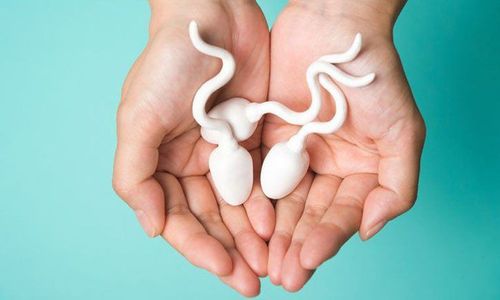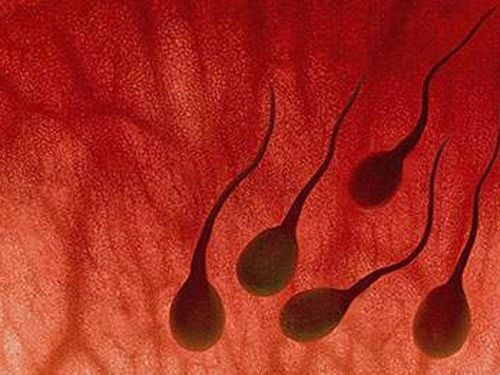Healthy semen is milky white and has the consistency of egg white. Changes in color, consistency, and even smell may be normal and may not warrant concern. In certain cases, these changes may, however, indicate underlying health problems.
1. what is the color of healthy semen
Normal, healthy semen is a milky white, or grayish liquid, with the consistency of egg white or honey. The smell of semen is typically described as alkalinic, akin to bleach.
These characteristics may vary depending on genetic makeup, diet, and health of each individual. Changes in semen composition are observable based on the afrementioned factors. Unless accompanied by other unusual signs, changes in semen are typically harmless. Semen is an integral part of the male reproductive system. It is a fluid that contains sperm cells, amongst other components. A 2016 research notes that healthy semen includes:
- Vitamins
- Enzymes
- Minerals
- Protein
- Antioxidant
- Sugar
These compounds help sperm cells to thrive and protect them for environmental threats to their survival. Semen can be influenced by other compounds not typically found in the male reproductive tract, they include: blood; pus; urine; or other secretions of the reproductive or urinary tract.
2. What does change in color of semen mean?
Many factors can cause semen color to deviate from its normal state. Semen that is milky white, slightly grayish, or translucent is normal
If semen is red, it can be due to:
- High blood pressure
- Rough masturbation or intercourse
- Sexually transmitted infections (STIs)
- Prostatitis
- Biopsy or surgery on the prostate
- Prostate/testicular/urethral cancer
If semen is pink, it can be due to:
- High blood pressure
- Rough masturbation or intercourse
- Sexually transmitted infections (STIs)
- Prostatitis
- Biopsy or surgery on the prostate
- Prostate/testicular/urethral cancer
If semen is brown, it can be due to:
- Prostatitis
- Biopsy or surgery on the prostate
- Prostate/testicular/urethral cancer
If semen is black, it can be due to:
- Heavy metal poisoning
- Spinal cord injury
If semen is yellow, it can be de to:
- STIs
- Prostatitis
- Diet
- Jaundice
- Increased white blood cell (WBC) count
- Substance abuse
- Urine in semen
If semen is green, it can be due to:
- STIs
- Prostatitis
- Diet
2.1/ What does red/pink semen mean?
If semen is red or pink in color, this is a concerning sign, meaning there might be blood in semen. A 2017 study has identified causes for this, some of which are harmless while others are associated with underlying causes, including:
- Capillary rupture: small, broken blood vessels leak some blood into semen, causing a red or pink appearance in semen color, if the blood has been expelled for some time, it can appear brownish. These blood vessels may break due to trauma, or rough masturbation/intercourse.
If these signs go away on their own, it may not warrant concern. If they persist or are accompanied by other signs, seek medical help to identify the underlying cause and start treatment.
Infection
Some infections can cause blood to mix with semen and result in color change depending on how long the blood has been outside the vessel. STIs such as chlamydia, gonorrhea, and herpes can cause bloody semen. Other signs often associated with STIs are:
- Pain during urination
- Pain/inflammation in the testicles
- Abnormal discharge from penis, either yellow or purulent discharge
- Itchy or painful rash in the groin region
Prostate related causes:
Some prostate pathologies can cause change to semen color and consistency, they include:
- Prostatitis: if left untreated, this can cause bloody semen, other signs include: difficulty with urination, pain during urination, often feeling the need to use the bathroom, pain on the lower abdomen, pain during ejaculation, fatigue, fever, chills.
Prostate surgery: Injury to the prostate can cause blood to mix with semen, leading to a change in color, this can be either red, pink, or brown.
Biopsy of the prostate: This is a procedure during which a sample of prostate tissue is acquired via a needle. This can cause injury to the prostate and cause blood to mix with semen
Cancer of the prostate, testicle or urethra: In some rare cases, bloody semen is a sign of these conditions. They are often curable, even in late stages. Other signs include pain, and discomfort in the prostate, testicle, urethra or the reproductive tract.
Hypertension: complications of hypertension can affect other parts of the body, including the reproductive tract. This causes blood to be mixed with semen during ejaculation
2.2. what does brown or black semen mean?
2.2.1. Trauma & excessive bleeding
Semen that is brown or black in color indicate there is excessive bleeding, or blood having been outside blood vessels for some time. This can be due to severe trauma, including: spinal injury, or injury to the reproductive tract. Spinal injury that does not cause excessive bleeding may still cause semen to turn brown, or black, though the cause remains unknown
Medical help must be sought in case of spinal injury or reproductive tract trauma promptly.
Heavy metal poisoning
High concentration of heavy metal can cause semen color change in some cases. A 2013 study found that semen black or brown in color often contains high concentration of manganese; lead; or nickel. The source of poisoning is often exposure to contaminated food, water or other environmental causes.
2.3. What does yellow to greenish semen mean?
Nhiễm trùng
Infection: Semen can be yellow or green in color due to urinary tract infection, such as chlamydia or gonorrhea, or prostatitis. Semen may also be odorous. Signs associated with these infections are: difficulty or pain during urination, frequent need to urinate, pain on the lower abdomen, pain during ejaculation, fatigue, fever, chills.
Infrequent ejaculation: semen has more time in contact with other secretions, leading to color change
Diet change/medication use: contact with certain vitamins and medication, or food items (those rich in sulfur)/ food dyes can cause semen to appear yellowish. Alcohol or marijuana use may also cause semen to change color. If this goes away by itself, it is not a cause for concern.
Urine
Semen may mix with urine droplets in the urethra and develop a yellowish color. This is usually not a concerning sign. However, some conditions such as urinary tract infection, benign prostatic hyperplasia or prostatitis will require medical help
Jaundice
Excess bilirubin in the blood may spill into semen, causing it to turn yellow. This usually requires further evaluation and treatment by a physician. Other symptoms may include: pain in the right lower ribs, fever, chills.
High WBC count
A high WBC count in semen turns the fluid yellow. This can be the result of another medical condition, such as urinary tract infection, prostatitis, or STIs. In some cases, this can be due to an autoimmune disorder. Some of these causes can lead to infertility, such as chlamydia.
3/ What does change to semen composition mean?
Just as for changes in color, changes in semen composition can be worrisome. These changes can vary from case to case.
Normal, healthy semen can undergo changes in consistency or composition due to:
- Diet
- Lifestyle (such as physical activity level)
- Use of substances (drugs or alcohol)
Temporary changes in semen consistency are usually harmless. For instance, dehydration can briefly cause semen to become more viscous temporarily.
However, if these changes accompany other problems, such as foul odor or color change, this can be a sign to seek medical attention.
4/ When to seek medical care
Changes to semen color alone typically does not require medical care. However,
prolonged changes to semen color with foul odor, or other concerning signs should be evaluated by a physician. These signs may include: difficulty urinating, inflammation in the groin, pelvic region, pressure during defecation. Early detection and treatment of underlying disease can help prevent further complications, especially serious ones like infertility
To arrange an appointment, please call HOTLINE or make your reservation directly HERE. You may also download the MyVinmec app to schedule appointments faster and manage your reservations more conveniently.
Reference source: medicalnewstoday.com; healthline.com/hea












